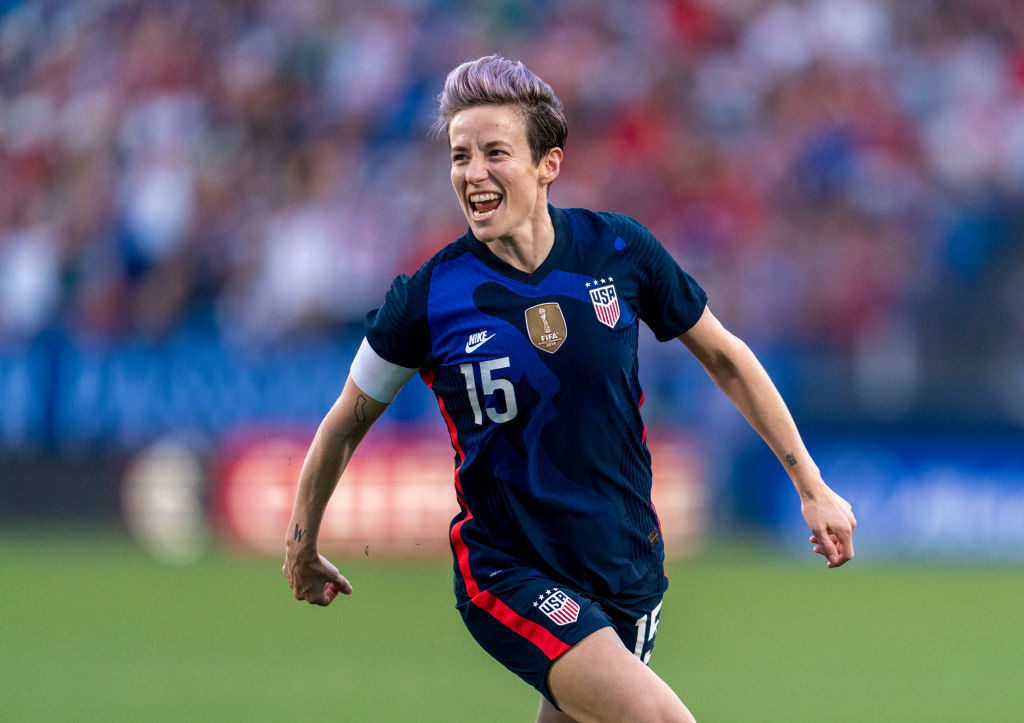Sports
The USWNT Just Lost by a Score of 66 Million to Nothing

The United States Women’s National Team now knows how Thailand’s players must have felt in that 13-0 soccer loss to the Americans last June in the first round of the World Cup. The USWNT got mauled in court on Friday when a federal judge threw out the most important portions of their discrimination lawsuit.
A nearly complete victory for the U.S. Soccer Federation
The lawsuit brought by the United States Women’s National Team on behalf of stars like Megan Rapinoe, Carli Lloyd, and Crystal Dunn, will proceed next month. However, what remains of it is relatively insignificant after U.S. District Judge Gary Klausner eviscerated their case Friday in Los Angeles.
The USWNT was pursuing a discrimination lawsuit against the U.S. Soccer Federation and seeking more than $66 million, contending the players on the international powerhouse deserved pay equal to what the USSF was paying its men’s team.
Klausner’s ruling called into question the numbers that lawyers for the USWNT provided and then said that question was moot anyway because the union representing the women voluntarily entered into a collective bargaining agreement that offered better base pay but less opportunity to collect bonuses.
“Plaintiffs cannot now retroactively deem their CBA worse than the MNT CBA by reference to what they would have made had they been paid under the MNT’s pay-to-play structure when they themselves rejected such a structure,” he wrote.
The only portion of the lawsuit left intact concerns an apparent double standard by the USSF when it comes to airline travel, hotel rooms, and access to support staff.
The U.S. Soccer Federation went on the attack vs. the USWNT
Friday’s ruling in federal court was a huge setback for the women’s soccer team in a dispute that has become acrimonious. The U.S. Soccer Federation’s original lawyers were blunt in original court filings that called USWNT players physically inferior to their male counterparts and said then men deserved more because they face tougher competition in more lucrative events.
The judge ended up disputing the pay argument, but not in a manner favorable to the women. He calculated that the USWNT’s roster averaged $221,000 in pay per game from 2015-19 while the men’s average was just $213,000.
He said in his 32-page ruling that the USWNT’s greater success on the field – four World Cup victories to none for the men – was irrelevant because compensation was spelled out in the teams’ respective collective bargaining agreements. For him to strike down a legally negotiated CBA could set a dangerous precedent in other labor disputes.
What’s next for the USWNT?
The USWNT can take U.S. District Judge Gary Klausner’s decision to the U.S. Court of Appeals. But winning there would be like overcoming a two-goal deficit while played shorthanded in the final 10 minutes.
The more productive route for their lawyers might be to continue pressing what remains of the lawsuit since the numbers regarding how much is spent on air transportation and hotels are lopsided in favor of the men’s team.
With a small win there likely, the USWNT should reopen the lines of communication with interim USSF president Cindy Parlow Cone, who played 158 games for the U.S. women from 1995-2006.
Parlow must certainly understand the value of getting this dispute out of the public spotlight and might be amenable to putting a deal on the table far less costly than the $66 million originally at stake but enough for the USWNT to walk away feeling as though the fight wasn’t a complete shellacking on the level of the U.S.-Thailand game last year.











